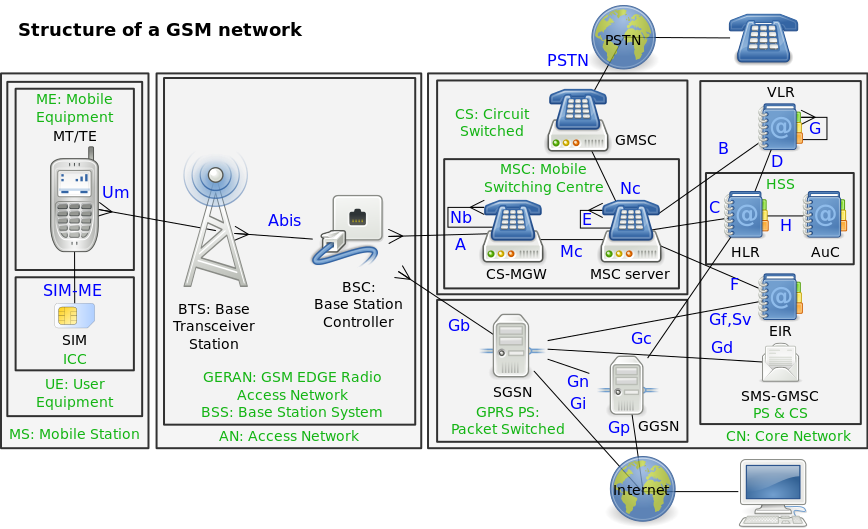Understanding basic of Global System for Mobile communications (GSM)
Even though the public did not see a need for changing from analog to digital, the network operators knew better. Analog phones have a bad spectral efficiency, and due to the rapid growth of the cellular market, operators had a high interest in making room for more customers. Also, research in communications had started its inexorable turn to digital communications, and that included digital wireless communications as well.
The European Telecommunications Standards Institute (ETSI) group started the development of a digital cellular standard that would become mandatory throughout Europe and was later adopted in most parts of the world: Global System for Mobile communications (GSM).
It was created to describe the protocols for second-generation (2G) digital cellular networks used by mobile phones and is now the default global standard for mobile communications – with over 90% market share, operating in over 219 countries and territories.
The European Telecommunications Standards Institute (ETSI) group started the development of a digital cellular standard that would become mandatory throughout Europe and was later adopted in most parts of the world: Global System for Mobile communications (GSM).
What is Global System for Mobile Communications (GSM)?
GSM (Global System for Mobile Communications, originally Groupe Spécial Mobile), is a standard developed by the European Telecommunications Standards Institute (ETSI).It was created to describe the protocols for second-generation (2G) digital cellular networks used by mobile phones and is now the default global standard for mobile communications – with over 90% market share, operating in over 219 countries and territories.
- GSM is an open, digital cellular technology used for transmitting mobile voice and data services.
- GSM is a trademark owned by the GSM Association. It may also refer to the (initially) most common voice codec used, Full Rate.
- GSM supports voice calls and data transfer speeds of up to 9.6 kbps, together with the transmission of SMS (Short Message Service).
- GSM uses a variation of time division multiple access (TDMA) and is the most widely used of the three digital wireless telephony technologies (TDMA, GSM, and CDMA).
- GSM digitizes and compresses data, then sends it down a channel with two other streams of user data, each in its own time slot.
- GSM networks operate in a number of different carrier frequency ranges , with most 2G GSM networks operating in the 900 MHz or 1800 MHz bands. Where these bands were already allocated, the 850 MHz and 1900 MHz bands were used instead (for example in Canada and the United States).
GSM Network structure:
Also read Introduction to System Architecture of Global System for Mobile communications (GSM)
The network is structured into a number of discrete sections:- Mobile Station(MS) - communicate over the air with a base station
- Base Station Subsystem(BSS) – the base stations and their controllers explained
- Network and Switching Subsystem (NSS) – the part of the network most similar to a fixed network, sometimes just called the "core network"
- GPRS Core network – the optional part which allows packet-based Internet connection
- Operation support system (OSS) – network maintenance
 |
| GSM Network Structure |